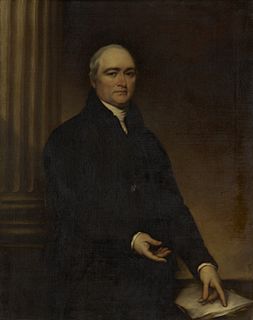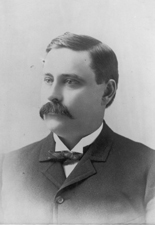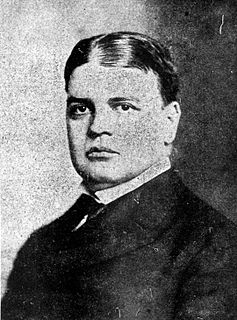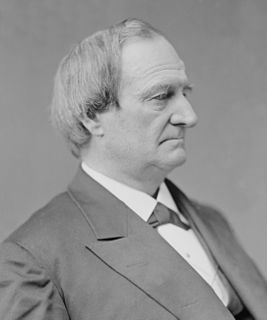
Timothy Dwight was an American academic and educator, a Congregationalist minister, theologian, and author. He was the eighth president of Yale College (1795–1817).

Timothy Dwight V was an American academic, educator, Congregational minister, and President of Yale University (1886–1898). During his years as the school's president, Yale's schools first organized as a university. His grandfather was Timothy Dwight IV, who served as President of Yale College ninety years before his grandson's tenure.

Daniel Coit Gilman was an American educator and academic. Gilman was instrumental in founding the Sheffield Scientific School at Yale College, and subsequently served as the third president of the University of California, as the first president of Johns Hopkins University, and as founding president of the Carnegie Institution. He was also co-founder of the Russell Trust Association, which administers the business affairs of Yale's Skull and Bones society. Gilman served for twenty five years as president of Johns Hopkins; his inauguration in 1876 has been said to mark "the starting point of postgraduate education in the U.S."

John Patton Jr. was a U.S. Senator from the state of Michigan.

Henry Baldwin Harrison was a Republican politician and the 52nd Governor of Connecticut.
William Orville Ayres was an American physician and ichthyologist. Born in Connecticut, he studied to become a doctor at Yale University School of Medicine.

Timothy Lester Woodruff was an American businessman and politician. A leader of the Republican Party in the state of New York, Woodruff is best remembered for having been elected three terms as the Lieutenant Governor of the state, serving in that capacity from 1897 to 1902.
John Wallace Houston was an American lawyer and politician from Georgetown, in Sussex County, Delaware. He was a member of the Whig Party and the Democratic Party, who served as U.S. Representative from Delaware and a Justice of Delaware Superior Court.

Richard Dudley Hubbard was a United States Representative and the 48th Governor of Connecticut.

Linonia is a literary and debating society founded in 1753 at Yale University. It is one of the university's oldest secret societies.

Henry Champion Deming was a U.S. Representative from Connecticut.
Joseph Bradley Varnum Jr. was an American lawyer and politician.
George Griswold Sill was an American politician who was the 37th Lieutenant Governor of Connecticut from 1873 to 1877.

Chester Smith Lyman was an American teacher, clergyman and astronomer.
Frederick Ellsworth Mather was an American military officer, lawyer and philanthropist
George Ingersoll Wood was an American Congregationalist clergyman and a founding member of Yale's Skull and Bones Society.

Ebenezer Kingsbury Hunt was a prominent physician in Hartford, Connecticut.
Timothy Dimock was an American physician and politician who was the father or prominent lawyer and businessman Henry F. Dimock.
William Henry Gleason was an American minister and politician.














